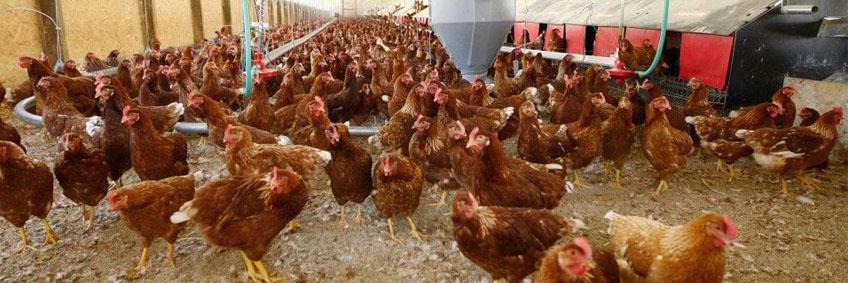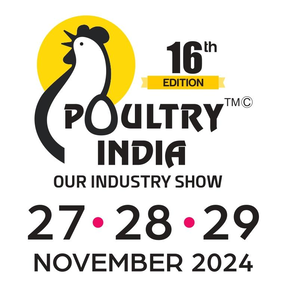5 questions about cage-free hen health, welfare

Cage-free egg production is quickly changing the egg industry and challenging farmers to elevate their bird management skills to achieve the best possible productivity. In July, Egg Industry magazine examined how to manage negative behaviors such as aggression, smothering and mislaid eggs. This month, the experts answer questions about mortality, perching and food safety.
1. Is higher mortality a part of cage-free farming?
There is no consensus on whether farmers need to accept higher mortality as a given in cage-free conditions.
Dr. Nestor Adriatico, director of technical services for Hendrix Genetics, said mortality will always be higher in cage-free production because of the hen’s direct contact with manure, exposure to pecking behavior, smothering, and injuries from collisions with the perches. He estimated mortality is only slightly worse than conventional housing on well-managed cage-free farms but could be twice as high in poorly managed farms. Salmet said approximate mortality in caged housing is 3 percent. In cage-free housing, mortality is 7 to 8 percent and possibly higher than 10 percent in free-range conditions.
Experts disagreed on whether higher mortality is a fact of life in cage-free farming, however free-range conditions present the highest potential flock mortality. | Terrence O’Keefe
Dr. Anna Concollato, of FACCO’s poultry science technology department, said mortality varies substantially in cage-free settings, between 4 to 13 percent at the end of the cycle. Generally, she agreed, cage-free conditions experience higher mortality than cages due to hazards of the environment.
Potters Poultry argued that higher mortality is not a fact of life in cage-free production. It said, in a well-managed cage-free farm, the target mortality at 72 weeks is 2 percent. If stress, enteric issues and disease are kept to a minimum through good flock management, mortality can be limited.
2. What effect does stocking density have on behavior?
The experts agree lower stocking density is needed to prevent stressful conditions inside the barn and promote flock health.
Birds need sufficient space to express natural behaviors; overcrowded conditions lead to more aggression and unproductive behaviors. If the stocking density is too high, hens cannot reach feed, water or nests properly. Greater space on the floor, in the nest and at the waterer and the feeder reduces competition in the flock and encourages uniformity.
Lower stocking density prevents stress and aggression in the house while promoting general flock health by giving birds the space to carry out natural behaviors. | Austin Alonzo
Potters encouraged providing 1.2 to 1.5 square feet of housing per bird to allow the animals the freedom to move, dustbathe and perch and reduce stress and aggression. Salmet said the European standard is 9 birds per square meter of floor and slatted area space. Concollato said stocking density in alternative systems can range between 6 to 9 birds per 10 square feet of usable area.
3. What are the welfare and management benefits of perching?
The perch is an important, yet easily overlooked, element of the cage-free house. Perches, often built as bars extending from the housing system, are seen as an animal welfare benefit because they allow birds to grasp onto something with their feet and fulfill the animal’s natural need to perch.
From a behavior management perspective, the experts said perches have a generally calming effect for flocks. Perches allow birds to escape aggressive behavior from more dominant birds, encourage more movement inside the house, and help the animals develop a stronger bone structure. By getting the birds off the ground and onto a perch, the farmer gets the benefit of additional usable surface area inside the barn and decreased density of birds on the floor.
Concollato said perches encourage hens to move vertically through the house, fostering the development of muscles and bones in the body. Jumping through the house is a positive for daily nesting behavior and is particularly useful in multi-tiered aviary housing. Along with reducing social stress, the devices give birds a place to roost overnight and can possibly reduce piling behaviors.
Perches are an essential part of a cage-free house, but farmers should be mindful of placing perches in order to maximize their utility and minimize the possible harm caused by repeated collisions with perches. | Austin Alonzo
Potters Poultry said farmers should provide as much perching as possible inside the barn in order to reduce overall negative behaviors like aggressive pecking and cannibalism. Additionally, moving birds off the ground and onto perches leads to higher litter quality and better bird health. Stress reduction created by the perches improves feather wear, which reduces flock mortality, too.
Perches are also helpful with other aspects of house management. Frank Luttels, sales manager for Volito, said perching behavior—particularly overnight – is necessary for good ventilation, as spreading the birds out keeps airflow consistent and reduces hot spots in the house. Salmet noted placing perches over manure belts can encourage birds to use the belt. This helps maintain better litter quality and improve manure management.
4. Is there an ideal perch design?
A perch can vary in shape and material, but often it is a round metal tube. Potters said the metal tube is actually the best shape for the bird. Concollato said the varying shapes and construction materials all have their own pros and cons, but the key is to ensure birds can get a good grip on the perch, can perch comfortably, and that the perch properly supports the foot by maximizing the contact area and minimizing the strain placed on a particular area of the footpad.
While perches are required by cage-free certification programs, there are concerns collisions with the devices harm birds’ bodies – particularly the foot pad and keel bone. Injuries to the feet and the keel are perceived as welfare drawbacks and are associated with lower productivity. Concollato cautioned the shape of the perch can affect the amount of strain placed on the foot pad and the keel bone. Over time, the perches’ shape can lead to deviation in the keel bone’s shape or footpad lesions.
Setting the proper distance between perches is also important to bird health. Concollato said hens are able to jump between perches set about 20 inches apart. Potters said round tube perches are the best for the animal. The company recommended perches be placed about 11 to 12 inches, or 27.9 to 30.5 centimeters, apart from one another to encourage birds to use them. A gap should also be provided on both sides of the perch to allow hens to grip it without trapping their claws.
5. What’s the best way to maintain a high level of food safety?
Critics of cage-free housing say one of the biggest drawbacks compared with conventional egg farming is a lower level of food safety. Taking the birds out of cages potentially places the eggs in contact with feces and other disease vectors. The experts said the food safety challenge can be met through a combination of strong flock and house management, application of biosecurity principles, and vaccinating pullets against Salmonella.
In a cage-free environment, biosecurity becomes even more important. Concollato said farmers need to follow three basic biosecurity principles: isolation, or keeping enough distance between houses or farms to limit disease spread; traffic control, or restricting human, animal and equipment movement into chicken houses; and sanitation, or regular cleaning and disinfection of production areas, equipment and personnel.
Dr. Jasper Heerkens, a poultry specialist for Jansen Poultry Equipment, said the cleanliness of the house plays a large role in food safety. Farmers should keep a clean nesting area and run the egg belt to make sure it stays clean. By controlling those two aspects, he said, the risk of contamination is significantly reduced. Along with surfaces that are in contact with the eggs, farmers need to regularly disinfect and flush their water lines to remove contaminants from the water supply. He added that farmers must closely monitor their flock and act quickly when there are any signs of illness. An eye for unusual behavior will develop over time, he said, but farmers can find some signs of disease in irregular droppings. Salmet added that along with watching for signs of illness, farmers need to remove dead birds as quickly as possible to prevent disease spread around the house.
Mislaid eggs can also be a food safety risk. Adriatico said proper training and optimal litter conditions will help prevent mislaid and floor eggs. Good litter quality comes in handy when eggs wind up on the floor, he said, as wet litter tends to cake on the egg.
Sources: https://www.wattagnet.com/
Sources: https://www.wattagnet.com/









.jpg)



